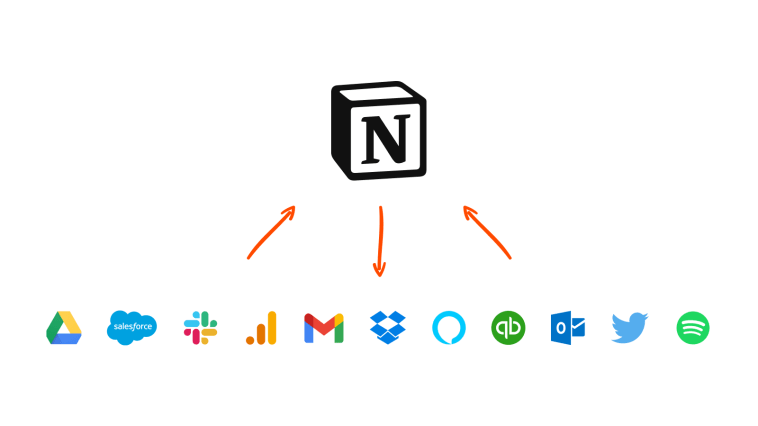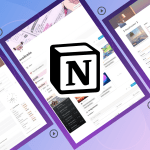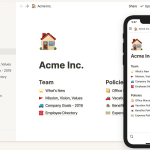Introduction.
Notion, a versatile productivity tool, offers a unique and convenient way to enhance your reading experience.
With its customizable interface and powerful organization features, Notion provides a seamless platform for storing, organizing, and engaging with all types of reading material, including articles, e-books, research papers, and more.
Whether you’re a student, professional, or avid reader, leveraging Notion for reading can revolutionize the way you access and interact with written content.
In this guide, we will explore how to use Notion for reading, allowing you to curate your reading list, take notes, collaborate, and optimize your overall reading experience.
Hey there, dear reader! We hope you’re enjoying the content on our blog. Did you know we have a treasure trove of other insightful articles waiting for you?
Checkout the links to the article below to become more productive and scale your Notion experience.
- How To Make Money Selling Notion Templates
- How To Make Money Online With Notion
- How To Make Money With Notion Templates
- How To Become a Notion Consultant
- How To Personalize Notion
- How To Use Notion For Social Media Management
- How To Sell Notion Templates On Etsy
- How To Build a Website On Notion
- How To Build Your Portfolio On Notion
- How To Use Notion For Personal Use
- How To Use Notion For Research
How Do I Use Notion For Reading?
With its versatile features, customizable interface, and collaborative functionality, Notion provides an all-in-one solution for storing, organizing, and interacting with various reading materials.
In this comprehensive guide, we will walk you through the process of using Notion for reading, empowering you to curate your reading list, take insightful notes, collaborate with others, and optimize your reading journey.
1. Creating a Reading Database.
The first step to using Notion for reading is to create a dedicated reading database. This database will serve as a centralized hub for all your reading materials.
We will guide you through the process of setting up your database, organizing it with relevant columns, and customizing it to suit your preferences and reading goals.
2. Curating and Organizing Your Reading List.
Notion allows you to curate and organize your reading list efficiently. We will explore different methods for adding books, articles, research papers, or any other reading materials to your database.
Learn how to categorize your reading list, add metadata such as author and publication date, and use tags to enhance searchability and filtering.
3. Annotating and Taking Notes.
Notion provides powerful tools for annotating and taking notes while reading. Discover various techniques for highlighting text, adding comments, and jotting down your thoughts directly within the reading material.
We will also explore how to create separate note pages for more extensive annotations, summaries, and reflections.
4. Utilizing Bookmarks and References.
Keep track of specific pages or sections within your reading materials by using bookmarks and references in Notion.
Learn how to create bookmarks to quickly access important content and refer back to them when needed.
Additionally, we will explore how to link related information, such as external articles or resources, to your reading materials using references.
5. Collaborating and Sharing Reading Resources.
Notion’s collaborative features make it easy to share reading resources with others and engage in discussions.
Discover how to invite collaborators to your reading database, assign tasks, and collaborate on shared reading materials.
Explore different ways to share specific articles or books with colleagues, friends, or study groups, fostering a collaborative reading environment.
6. Creating Reading Plans and Goals.
Notion can assist you in setting reading plans and goals. We will guide you through the process of creating reading schedules, setting targets, and tracking your progress.
Learn how to leverage Notion’s reminder and calendar features to stay on track with your reading goals.
7. Integrating Reading Resources with Other Notion Pages.
Notion allows seamless integration between your reading materials and other pages within your workspace.
Discover how to link your reading list to project management pages, personal notes, or research pages, creating a holistic view of your knowledge and increasing cross-referencing capabilities.
Conclusion.
Notion’s versatility as a productivity tool extends to the realm of reading, providing a comprehensive platform for organizing, annotating, and collaborating on reading materials.
By following the techniques and strategies outlined in this guide, you can unlock the full potential of Notion for reading and transform your reading experience.
Embrace the flexibility, customization options, and collaboration features offered by Notion, and immerse yourself in a world of enhanced learning, organization, and engagement with the written word.
Hey there, dear reader! We hope you’re enjoying the content on our blog. Did you know we have a treasure trove of other insightful articles waiting for you?
Checkout the links to the article below to become more productive and scale your Notion experience.
- How To Make Money Selling Notion Templates
- How To Make Money Online With Notion
- How To Make Money With Notion Templates
- How To Become a Notion Consultant
- How To Personalize Notion
- How To Use Notion For Social Media Management
- How To Sell Notion Templates On Etsy
- How To Build a Website On Notion
- How To Build Your Portfolio On Notion
- How To Use Notion For Personal Use
- How To Use Notion For Research






GIPHY App Key not set. Please check settings